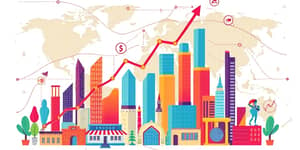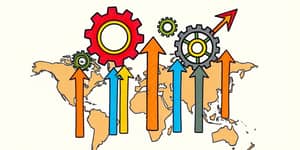
In an age of unprecedented disruption, organizations must align risk management with sustainability to secure both resilience and growth. This article explores how companies can transform risk frameworks into strategic engines for long-term success, weaving data, technology, and purpose into every decision.
Risk management has evolved beyond a mere compliance exercise into a fundamental driver of corporate strategy. No longer siloed, it now encompasses financial, operational, environmental, social, and governance dimensions under one roof. With stakeholders demanding transparency on Environmental, Social, and Governance (ESG) performance, companies that embed long-term value and resilience into their risk processes gain a powerful competitive edge.
By integrating sustainability into risk frameworks, organizations can anticipate climate disruptions, regulatory shifts, and shifting consumer values. Rather than reacting to crises, they build capacity to pivot swiftly, protecting reputations, assets, and stakeholder trust.
The scale and pace of investment in risk management and ESG initiatives underscore their strategic importance:
Today, 36% of organizations will boost risk and compliance budgets within two years, while 90% of S&P 500 firms publish ESG reports. Consumers and investors alike are reshaping markets: 76% say they would stop buying from companies that ignore environmental or social responsibilities, and 89% of investors consider ESG criteria when allocating capital.
Addressing these drivers requires a holistic approach that anticipates, measures, and mitigates threats before they become crises.
Regulations worldwide are converging around transparency and accountability. In Europe, the Corporate Sustainability Reporting Directive (CSRD) and the upcoming Corporate Sustainability Due Diligence Directive (CSDDD) demand rigorous disclosures on environmental and human rights impacts across entire value chains. Simultaneously, the EU AI Act mandates ethical AI adoption, blending innovation with responsibility.
Meanwhile, the Green Claims Directive aims to standardize sustainability terminology, combating greenwashing and building market trust. Companies operating globally must juggle regional nuances while striving for coherent, data-driven sustainability metrics that stand up to rigorous oversight.
These strategies equip organizations to not only withstand shocks but also to seize emerging opportunities in sustainable markets.
Closing these gaps demands bold leadership, transparent communication, and an organizational culture that celebrates proactive risk-taking and continuous learning.
As global challenges multiply, the most successful organizations will view risk management not as a defensive posture, but as a launchpad for innovation and differentiation. By embedding real-time business intelligence and sustainability into every decision, they can anticipate market shifts, attract mission-aligned investors, and cultivate enduring customer loyalty.
Consider the companies leading the TIME and Statista 2025 Sustainable Growth Rankings: their secret lies in balancing revenue growth with minimal carbon footprints, high green energy use, and transparent reporting. Even cautionary tales, such as Microsoft’s 29.1% emissions increase driven by AI expansion, underscore the nuance of managing digital transformation alongside environmental goals.
In the decade ahead, unified global ESG frameworks will continue to evolve, but success will hinge on how adeptly organizations localize these principles and leverage emerging technologies—AI, advanced analytics, and nature-related risk tools—to build more resilient supply chains and operations.
Ultimately, sustainable growth is a journey, not a destination. By weaving risk management into the fabric of corporate purpose and strategy, organizations can not only navigate uncertainty but thrive in it, transforming challenges into opportunities for lasting positive impact.
References













